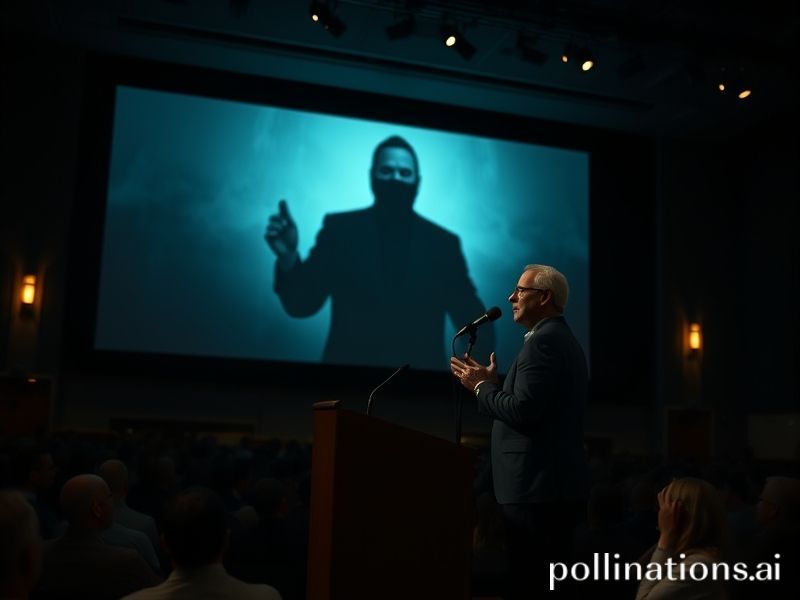Peter Thiel’s Antichrist Lecture: When Silicon Valley Meets the Apocalypse
**Peter Thiel’s Antichrist Lecture: When Silicon Valley Meets the Apocalypse**
Alright, folks, buckle up. We’re diving headfirst into the bizarre, the bewildering, and the downright bizarre again—Peter Thiel’s “Antichrist” lecture. Yes, you read that right. The billionaire venture capitalist, co-founder of PayPal, and all-around Silicon Valley heavyweight has given us yet another reason to question the sanity of the tech elite. But why is this lecture trending globally, and what does it mean for the rest of us mere mortals?
### **The Lecture That Broke the Internet**
For those of you who’ve been living under a rock (or just avoiding the chaos of the internet for a hot minute), Peter Thiel recently delivered a lecture at Stanford University titled “The End of the Future.” In it, he referenced the Antichrist—not in the way you’d expect from a tech mogul, but as a metaphor for the forces that are supposedly holding back progress. According to Thiel, the Antichrist is a symbol of the “anti-human” forces that prevent humanity from reaching its full potential. Cue the dramatic music.
### **Cultural Context: Silicon Valley Meets the Apocalypse**
Thiel’s lecture is a perfect storm of Silicon Valley’s obsession with futurism, its love for dramatic metaphors, and its penchant for apocalyptic thinking. The tech world has always been fascinated with the idea of the “end times”—whether it’s Elon Musk warning us about AI or Thiel himself investing in life extension technologies. It’s as if the tech elite can’t decide if they want to save the world or watch it burn.
But why the Antichrist? Well, Thiel is a self-proclaimed Christian, and his lecture is a blend of religious symbolism and techno-utopianism. He’s essentially saying that the forces of progress (read: Silicon Valley) are locked in a cosmic battle with the forces of stagnation (read: everyone else). It’s a narrative that plays into the tech world’s savior complex and its tendency to see itself as the vanguard of human evolution.
### **Social Impact: Meme Material and More**
Of course, the internet didn’t take this lecture lying down. Memes, hot takes, and think pieces have been flooding social media, turning Thiel’s apocalyptic rant into a viral sensation. From “Peter Thiel vs. the Antichrist” memes to debates about the role of technology in society, the lecture has sparked a cultural moment that’s equal parts hilarious and unsettling.
But beyond the memes, there’s a deeper conversation happening. Thiel’s lecture has reignited debates about the role of technology in shaping the future, the ethics of techno-utopianism, and the dangers of unchecked power. It’s a reminder that the tech elite’s visions for the future aren’t just abstract ideas—they have real-world consequences.
### **Why This Matters**
So, why should you care about Peter Thiel’s Antichrist lecture? Because it’s a microcosm of the broader cultural and technological shifts happening right now. It’s a window into the minds of the people who are shaping our future, and it’s a reminder that their visions aren’t always benign.
Thiel’s lecture is also a testament to the power of the internet to turn even the most obscure academic talk into a global phenomenon. In an age where information spreads at the speed of light, a single lecture can spark a cultural moment that transcends borders and languages.
### **Conclusion: The Antichrist, the Internet, and Us**
In the end, Peter Thiel’s Antichrist lecture is a lot of things—bizarre, thought-provoking, and undeniably meme-worthy. But more than anything, it’s a reminder that the future is a battleground, and the stakes are higher than ever. Whether you’re a tech optimist or a skeptic, one thing is clear: the debate about the role of technology in our lives is far from over.
So, as we navigate this brave new world, let’s keep one thing in mind: the Antichrist might be a metaphor, but the forces shaping our future are very real. And they’re coming for us all.







